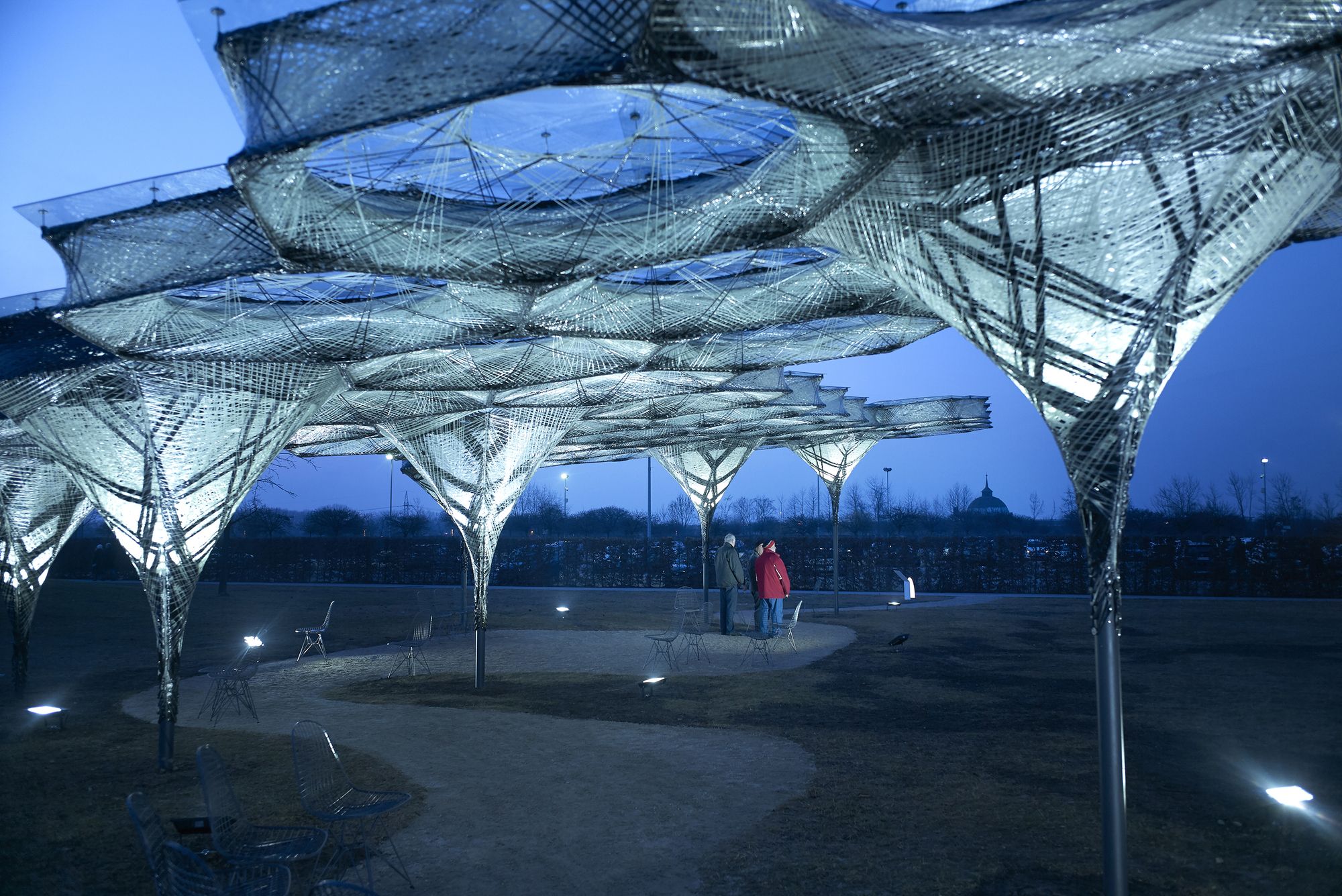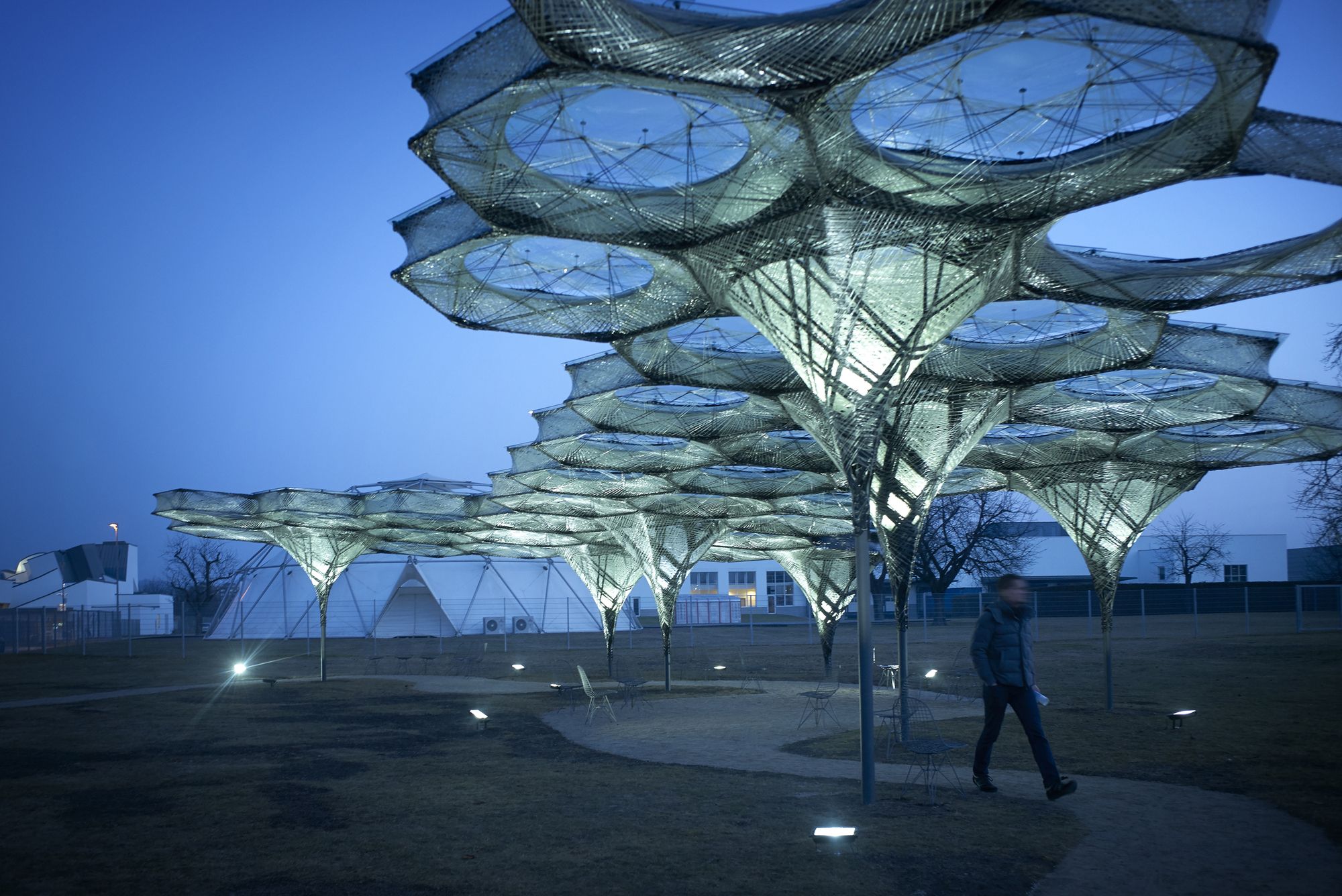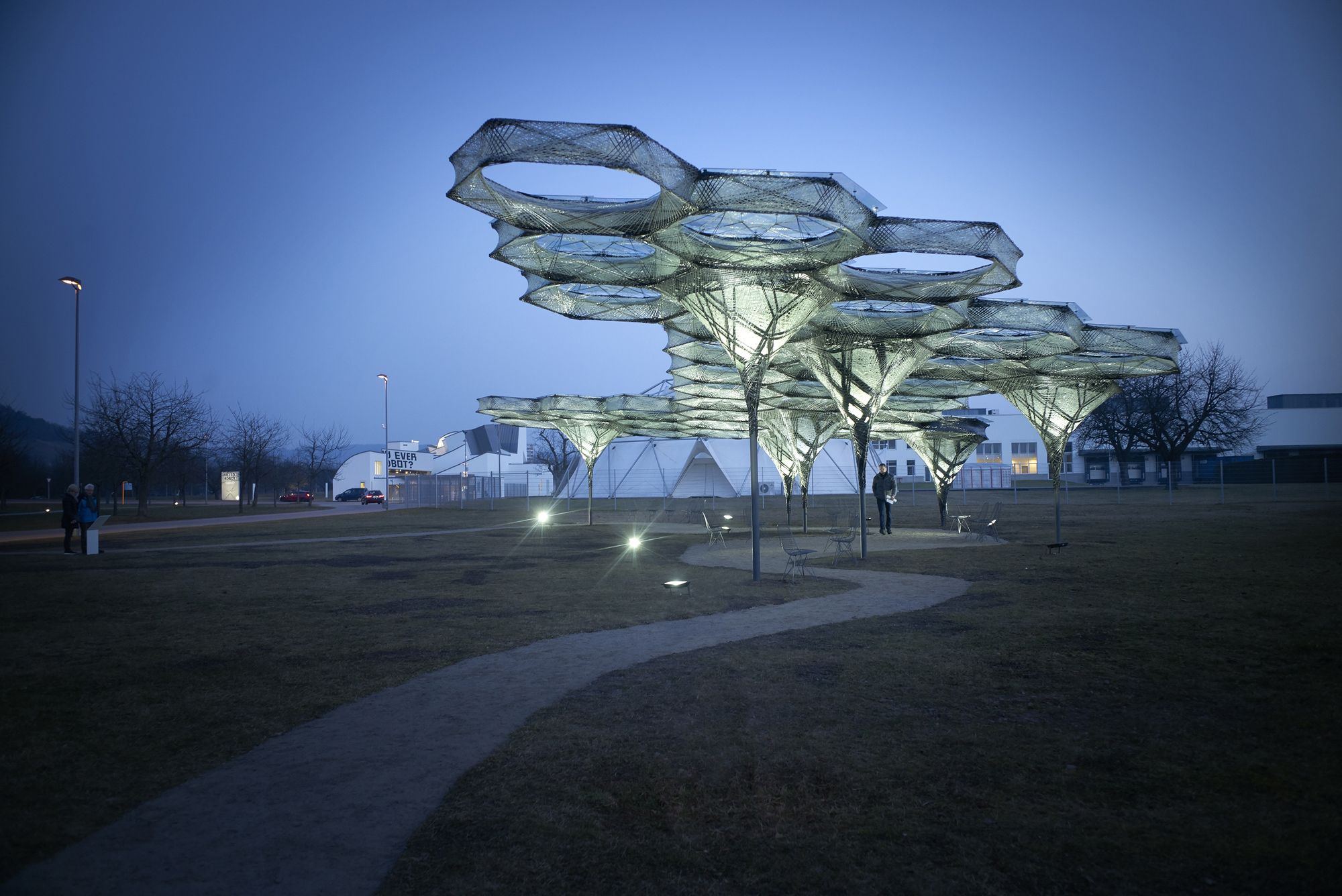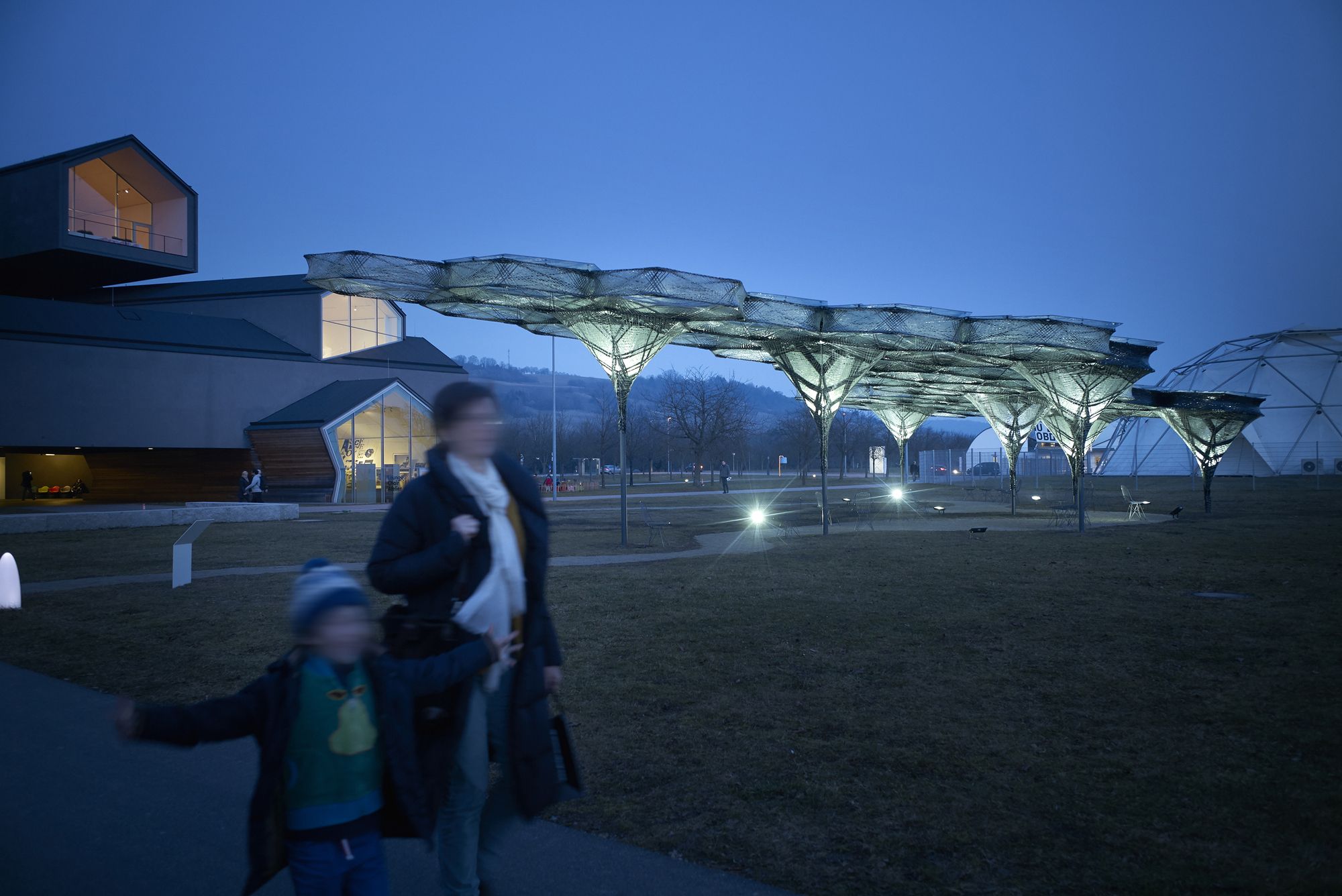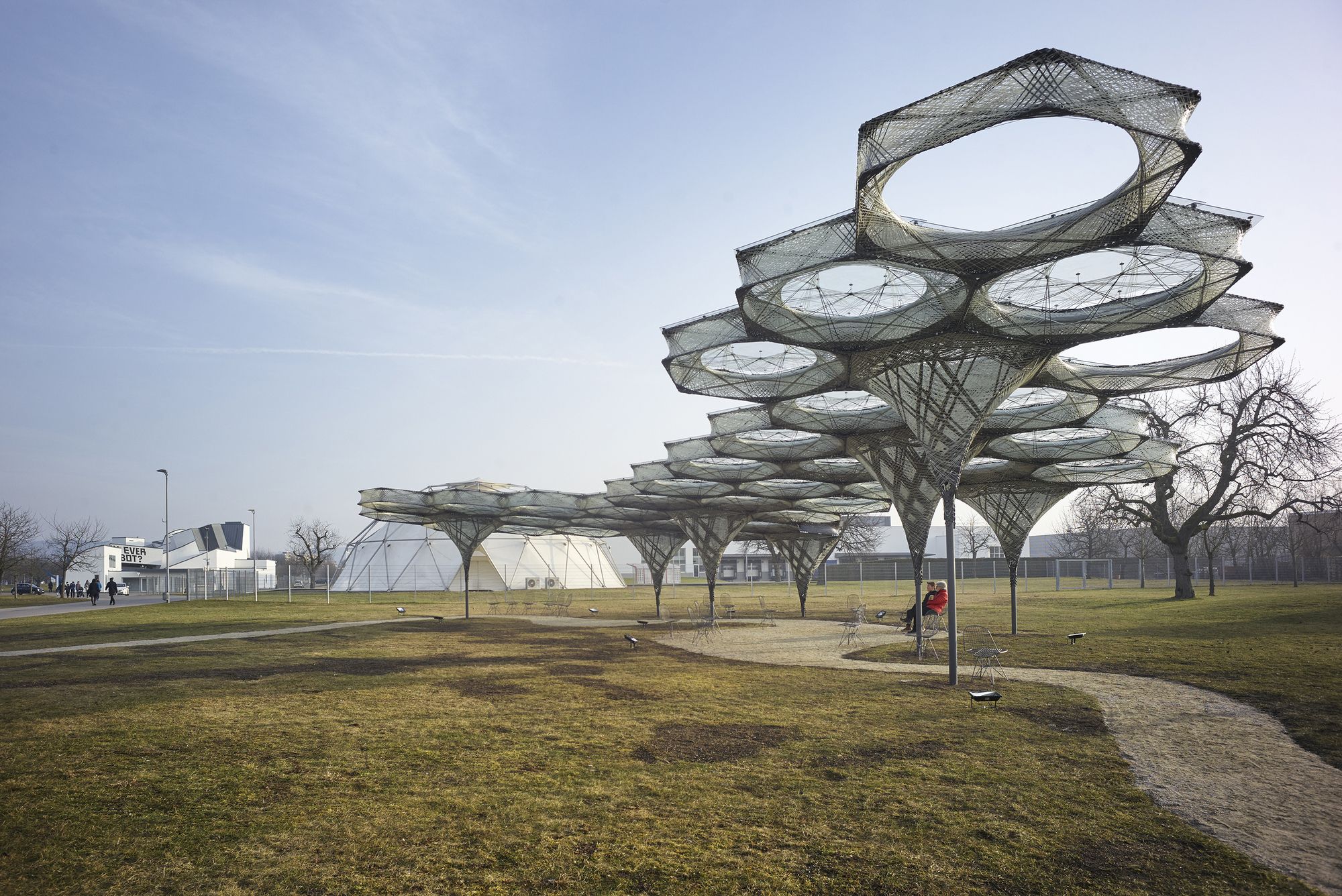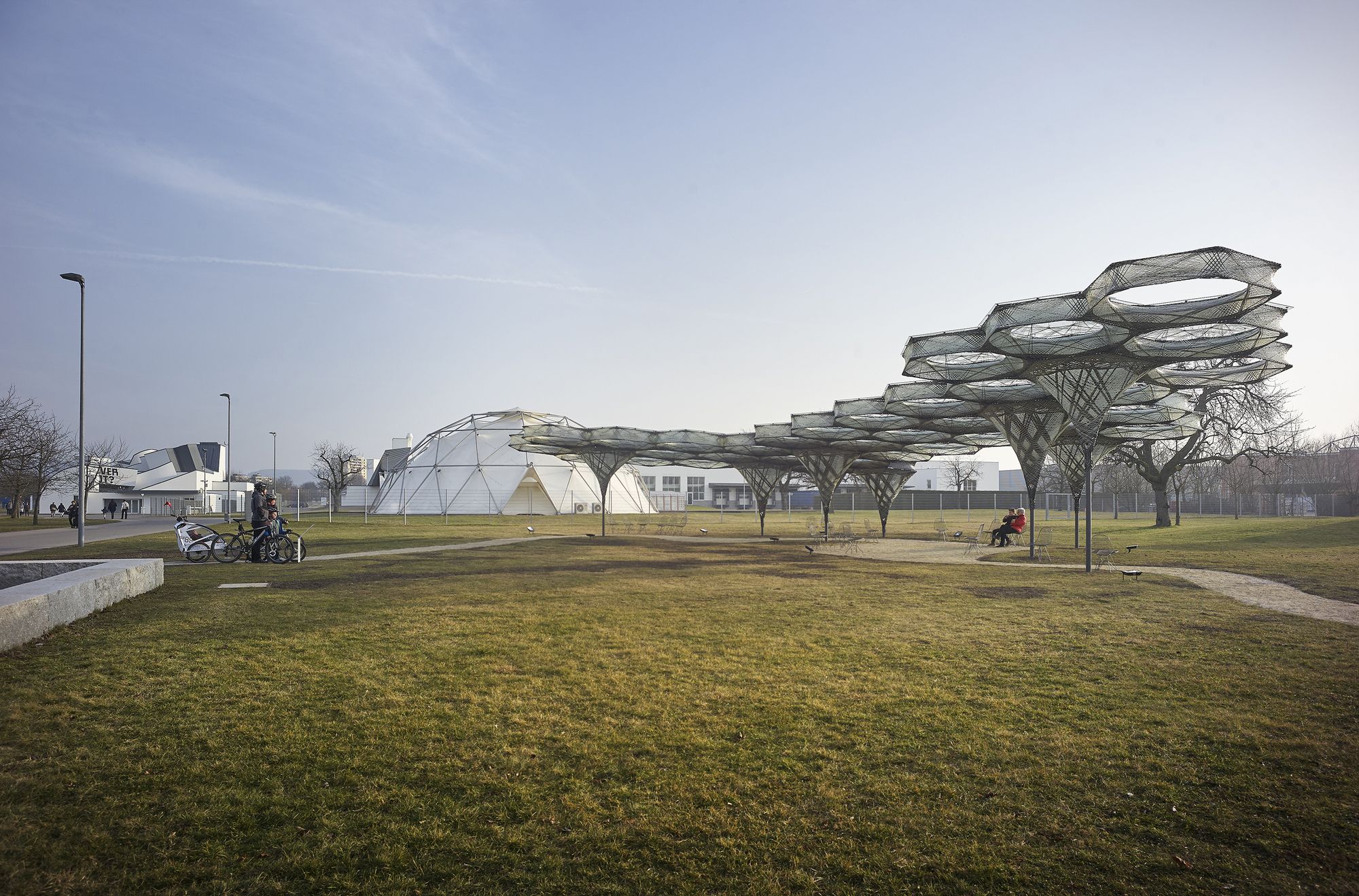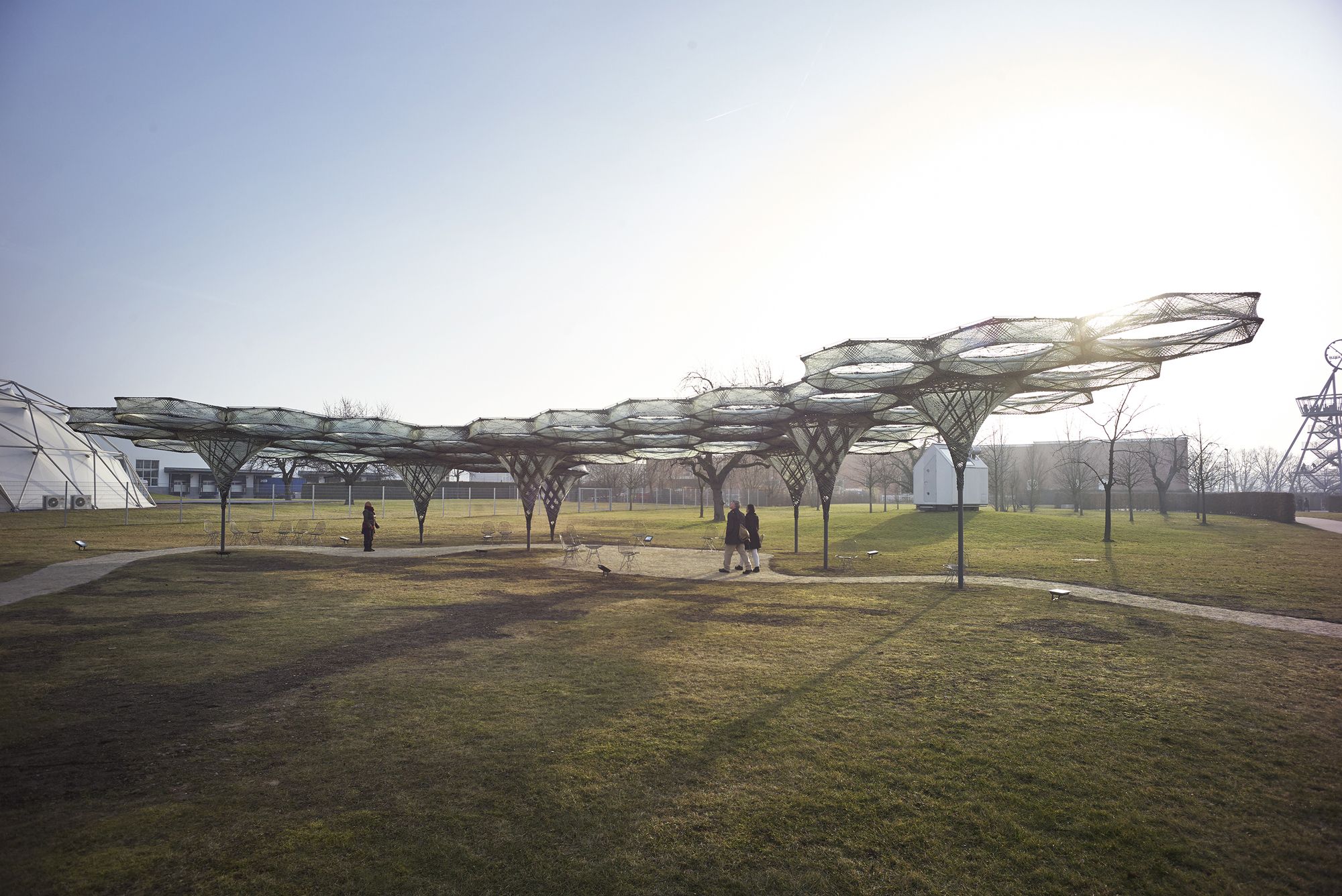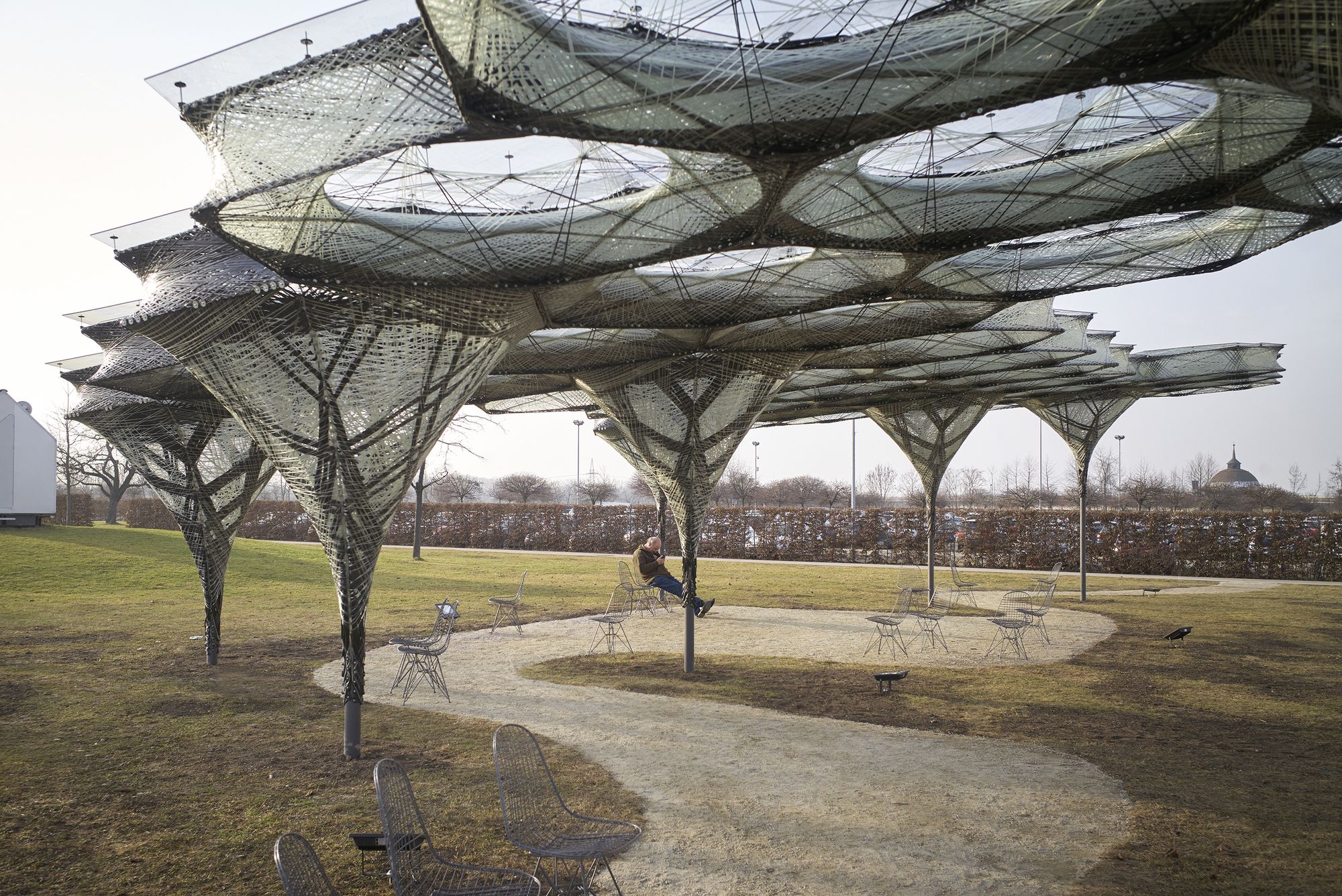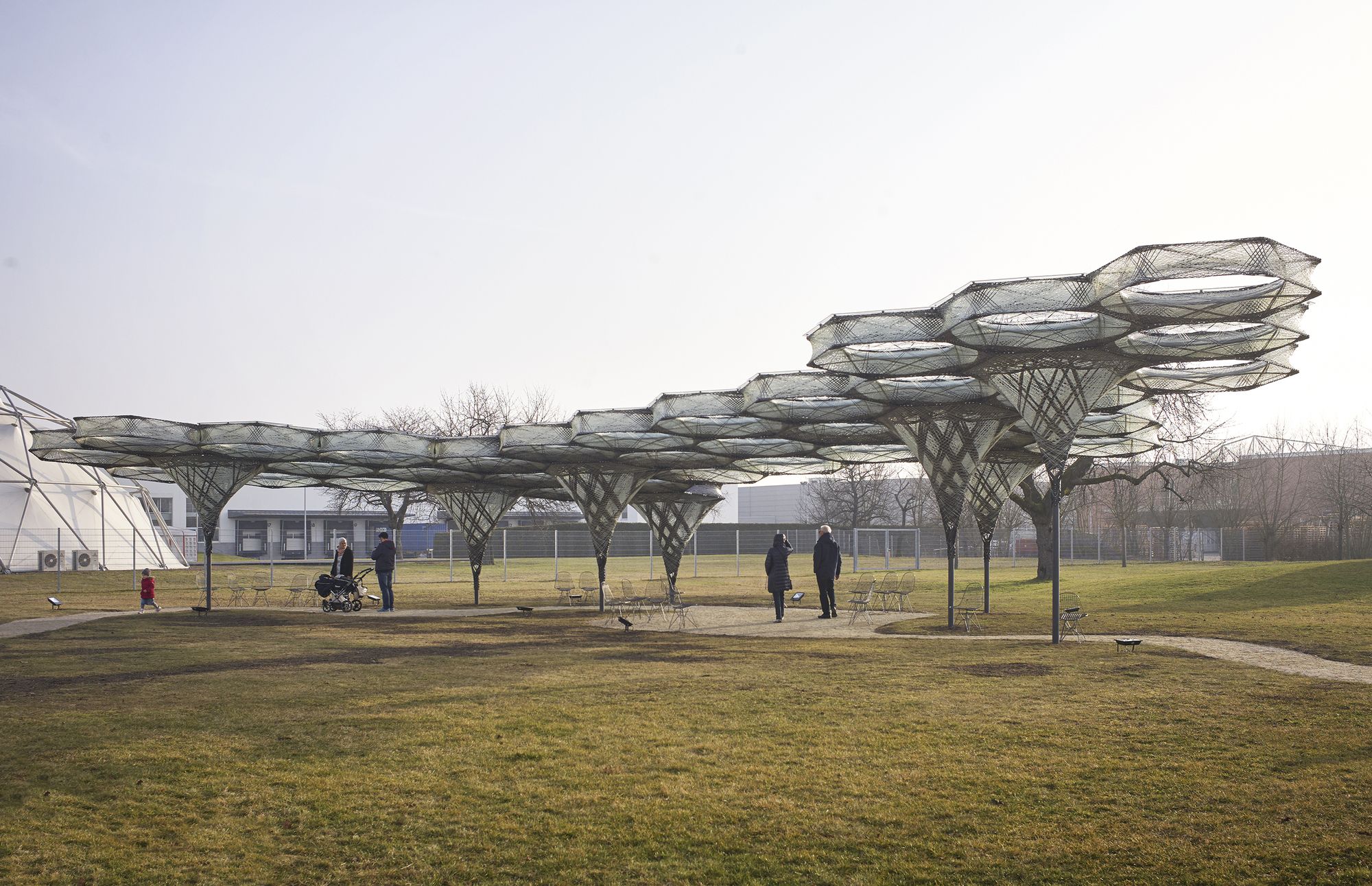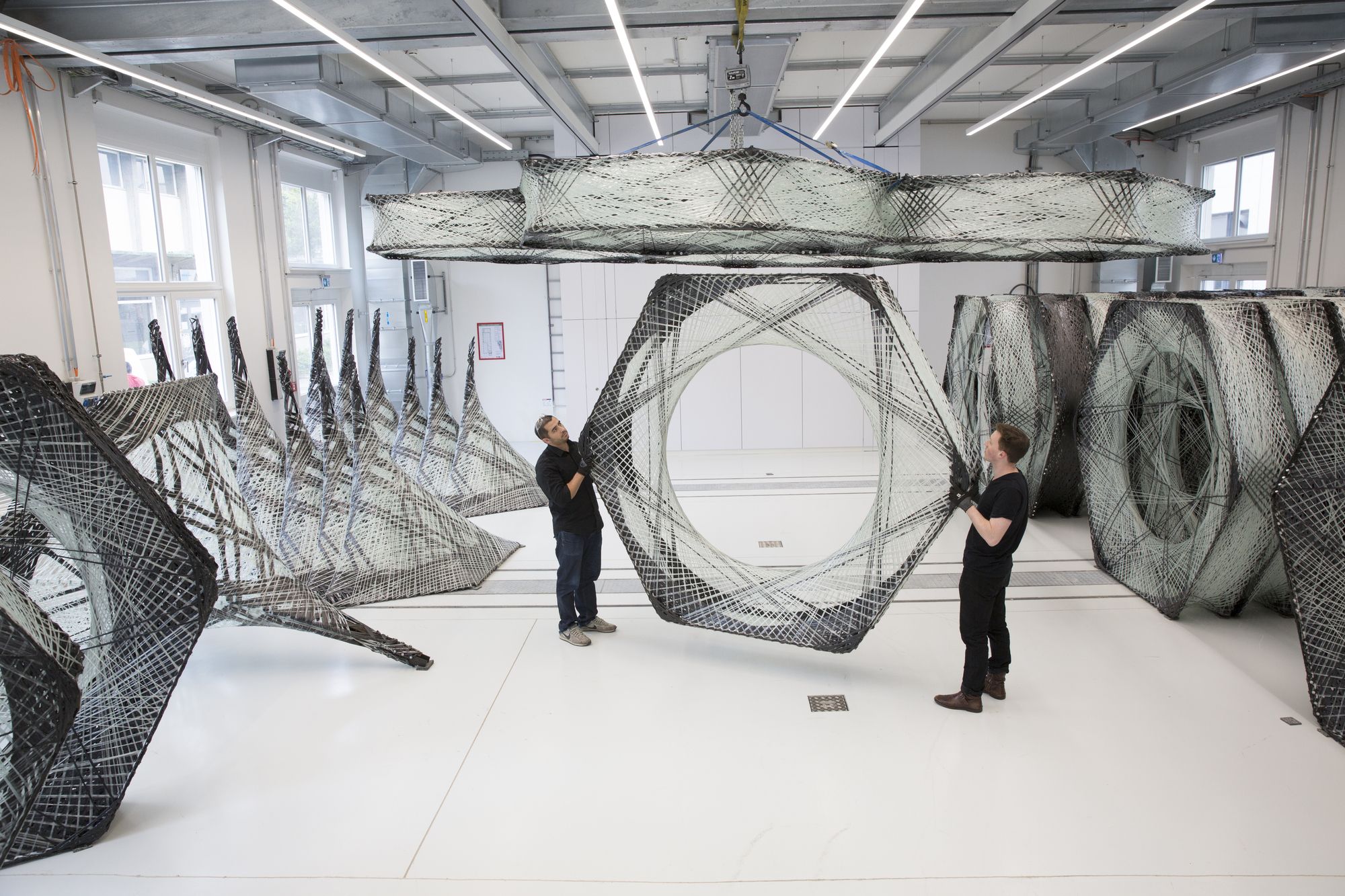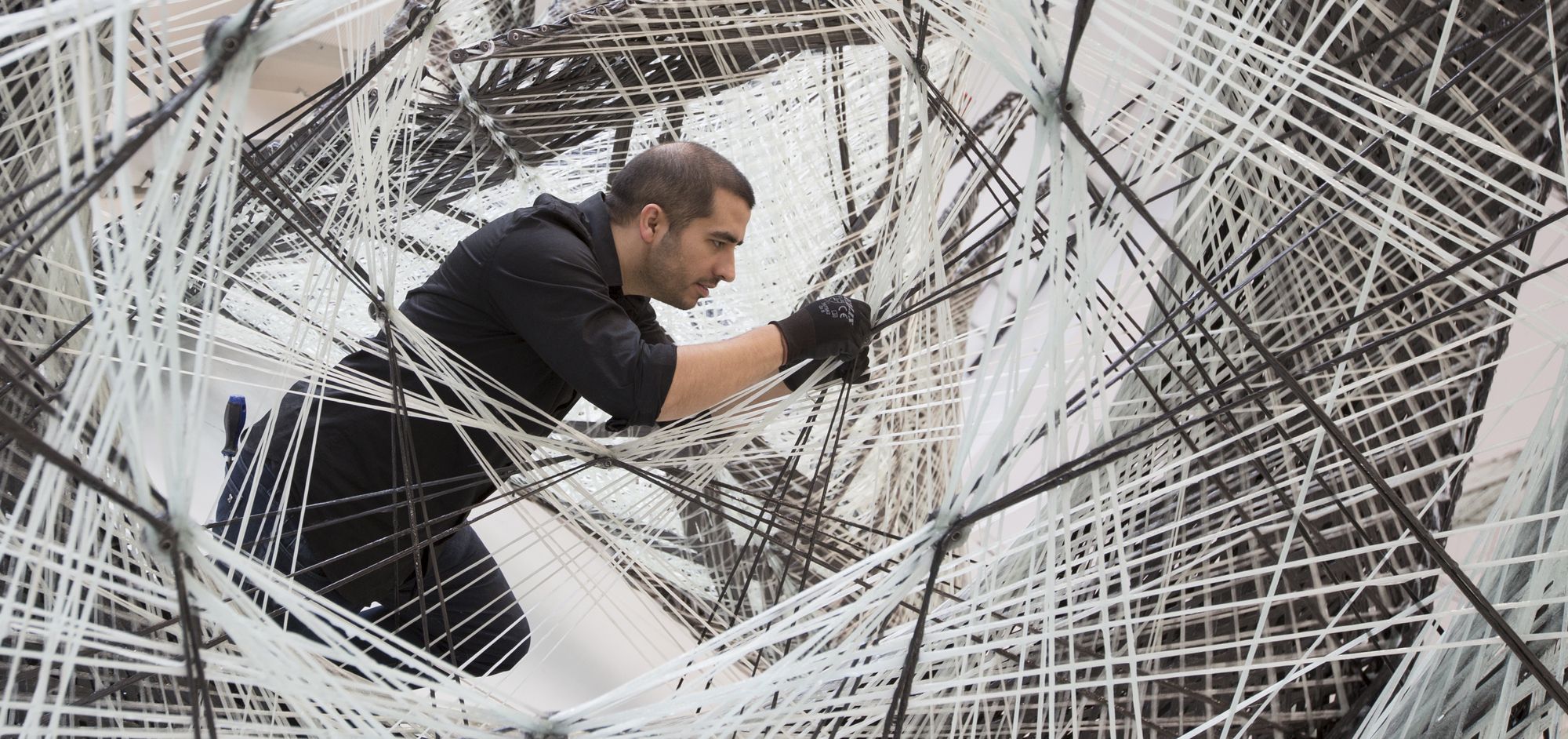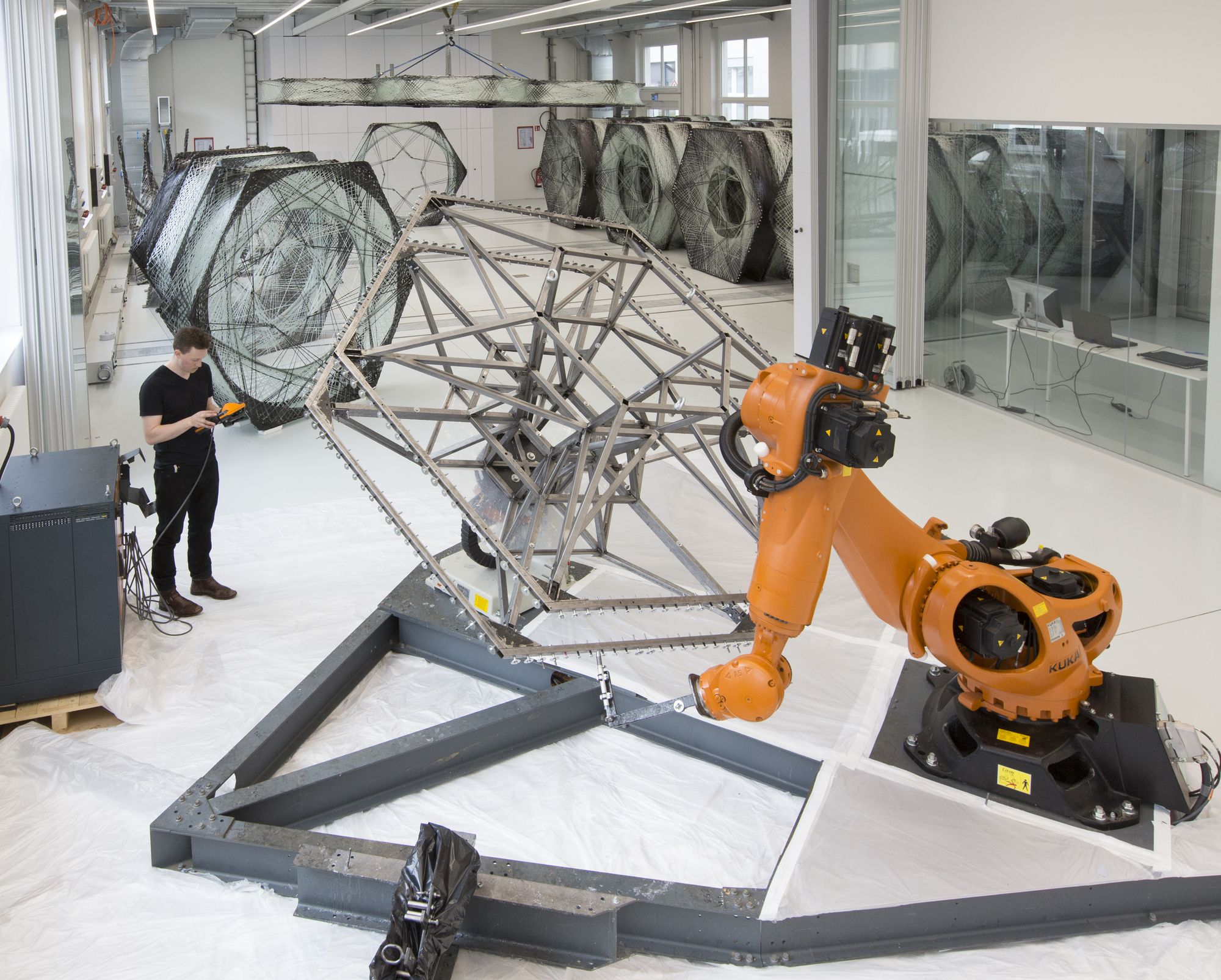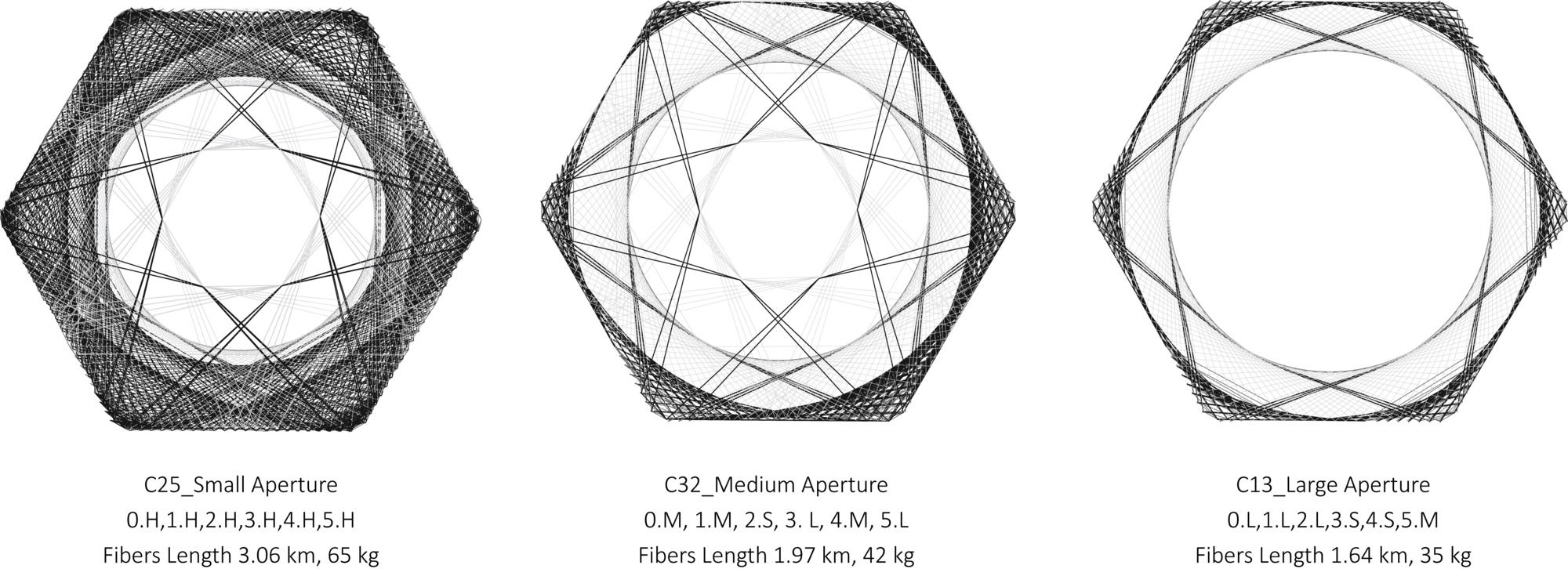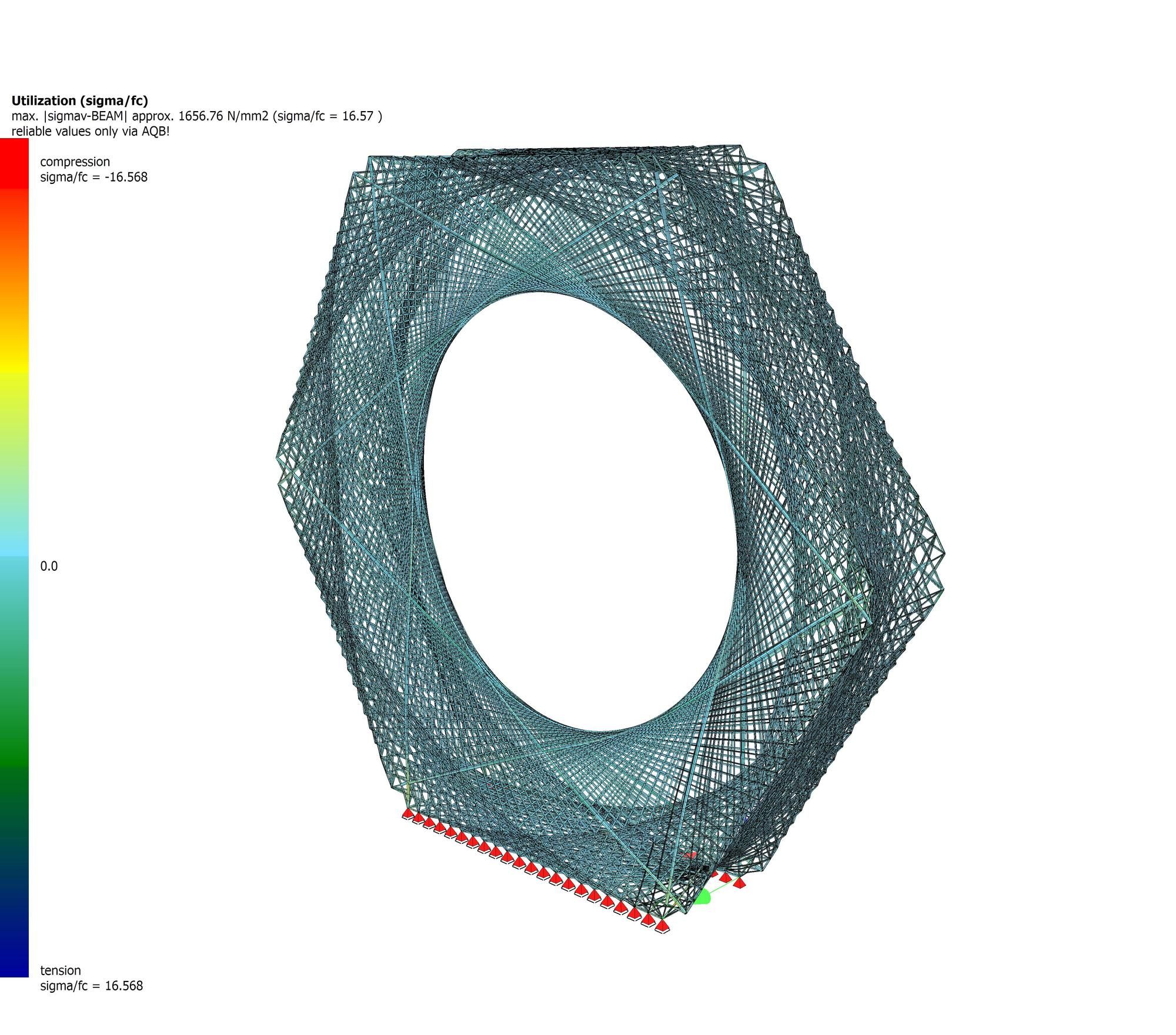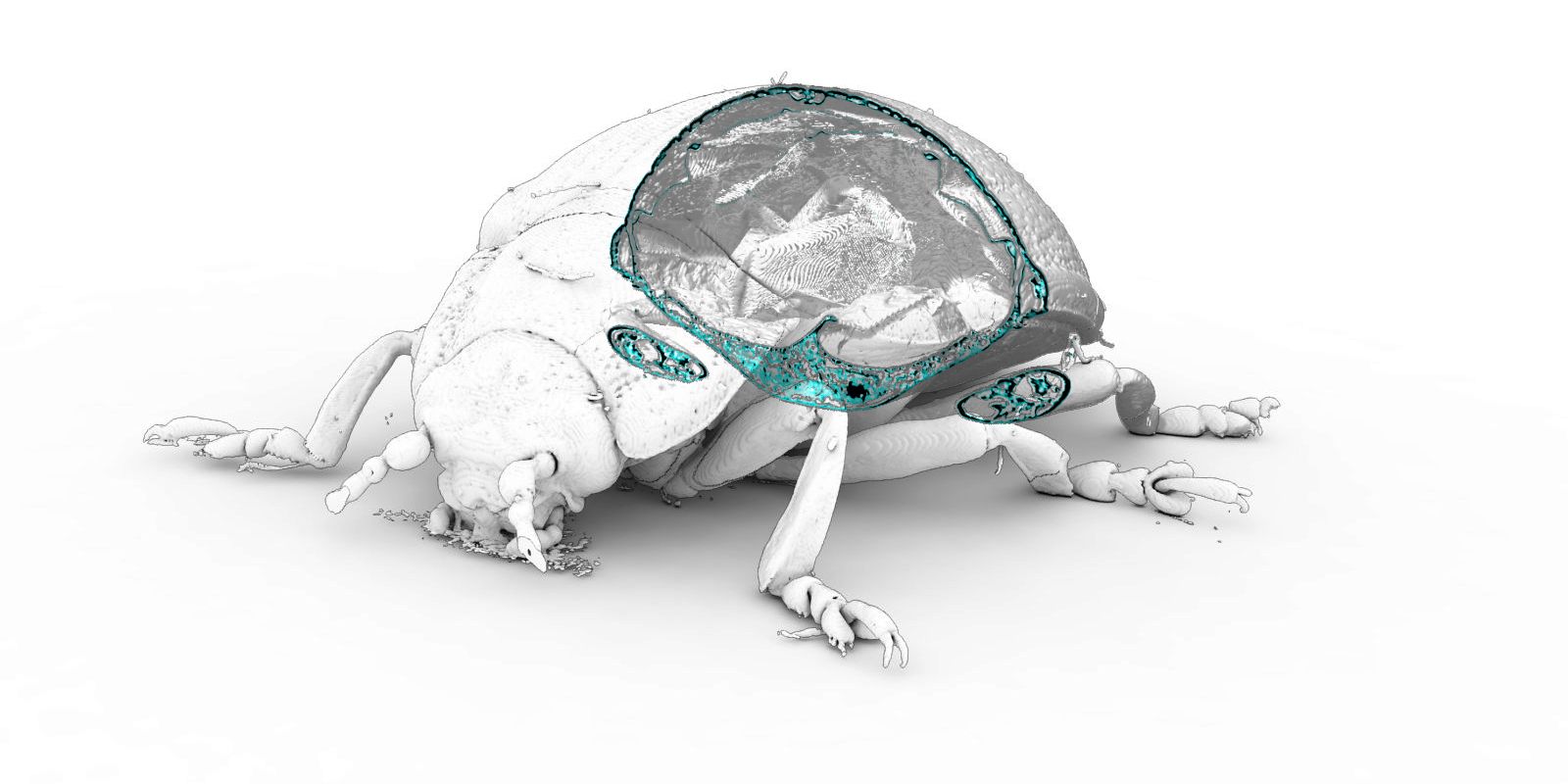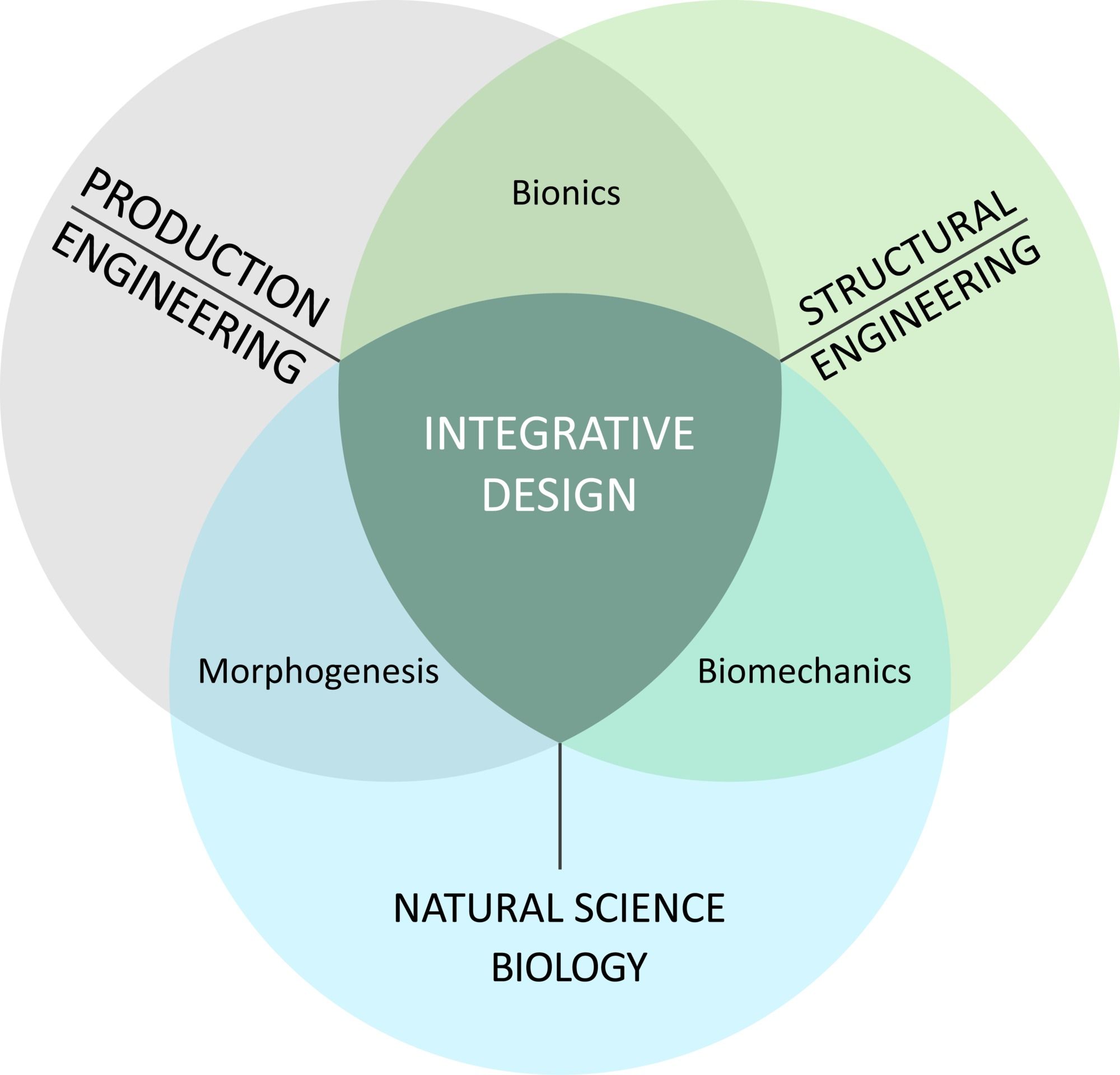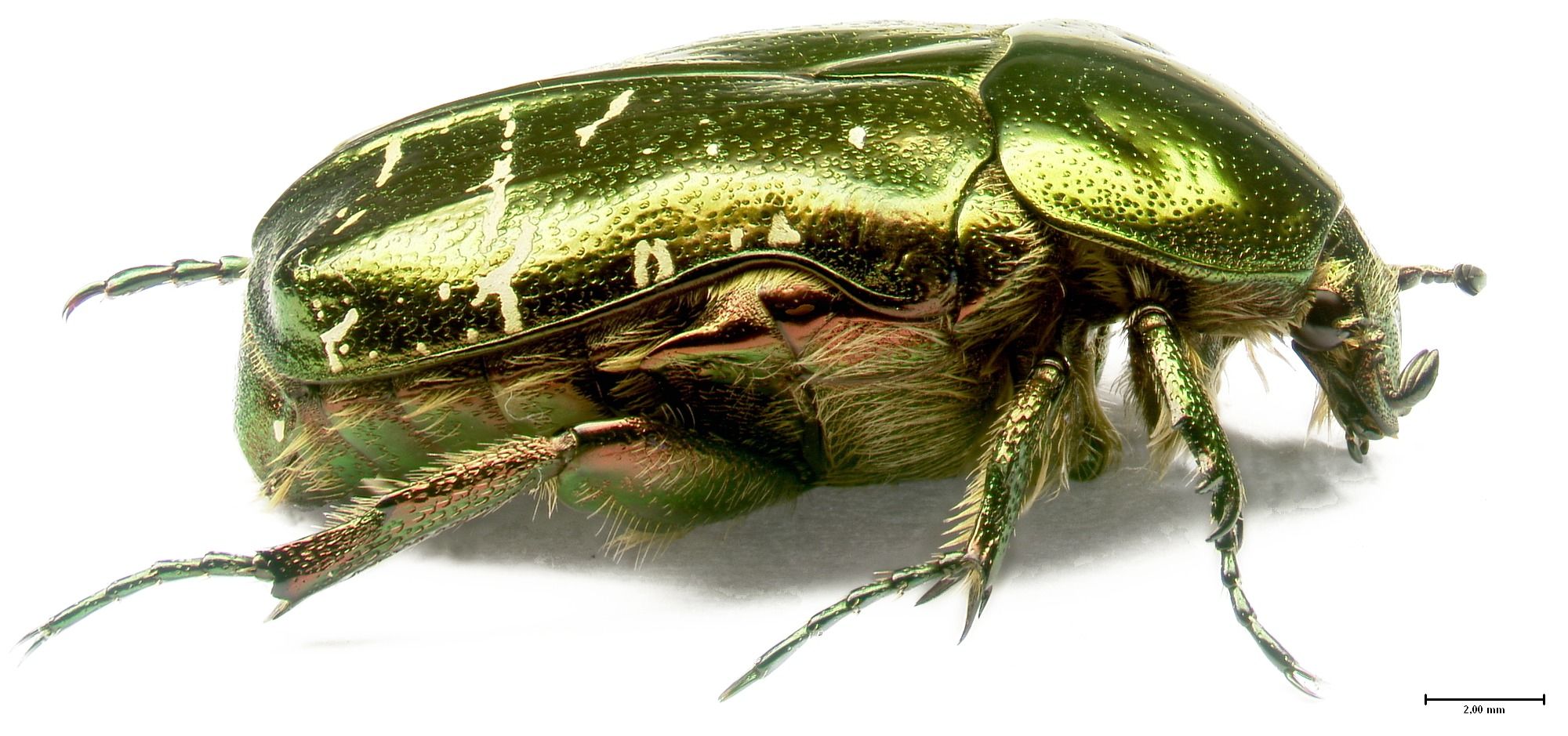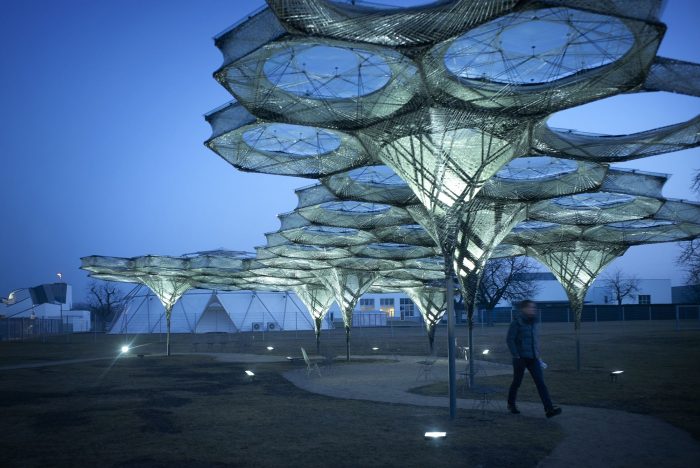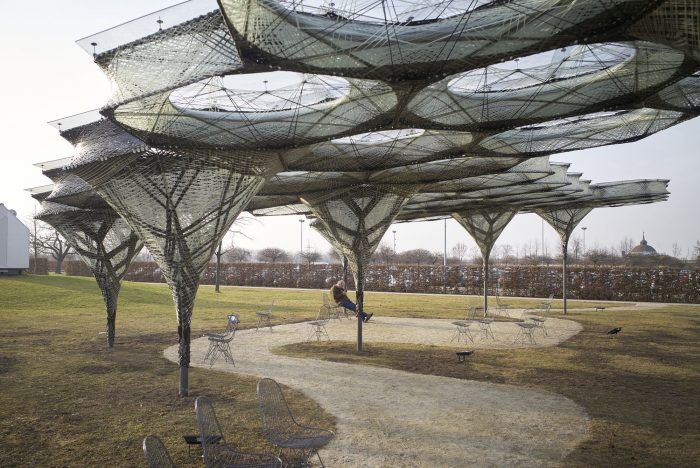Elytra Filament Pavilion Unveiling
Achim Menges, head of the Institute for Computational Design at the University of Stuttgart, is working on creating a software that enables robotic fabrication to become more intuitive. His latest experiment with the system is the one developed for building a carbon-fiber pavilion, the architect stating that “robots could be programmed to build stadium roofs using the fibrous building material”. In a recent interview, the architect also said that combining digital technology and physical fabrication is “a very new technology so nobody has picked it up and commercialized it. We’re not just looking at the gradual evolution of how things are made. It’s a pretty dramatic shift, a kind of fourth industrial revolution.” Menges researches new ways of interacting with materials because he considers we “haven’t left that phase where these new materials are mimicking old materials.” Generally, carbon-fiber components are used in molds, but this does not enhance their physical capabilities, but it is just a way of using a new material in an old way. The architect draws inspiration from nature rather than from previously built elements, hoping to renew the design approach of the contemporary era. His previous inspirations have been the shell of a sea urchin or the wings of a beetle. His latest inspiration comes from the webs of spider waters, in the form of the Elytra Filament Pavilion, which is being built by a robot in a warehouse space. The canopy will be constructed out of 40 hexagonal cells, all brought into their specific shape by the Kuka robot.
“Fibrous materials are still not used in a way that really explores the intrinsic material properties and characteristics, both in terms of the design language, but also in terms of the structural capacities that they have.” Together with engineers Jan Knippers and Thomas Auer and architect Moritz Dörstelmann, he developed a robotically fabricated carbon-fiber pavilion for London’s V&A museum. The structure is incredibly light (each cell weighs 45 kg) and it is expected to resist for 50 years, while also being adaptable to the British climate “As you can see, the cover is absolutely weatherproof!” Menges stated at the launch on Wednesday. Menges aims to change the way we perceive and interact with materials. One such example is the robotic weaving technique he developed, a system created in order to expand carbon-fiber use to large scales structures. However, what the architect considers as a first concern is developing computer software able to control the robotic construction. What the team at Stuttgart proposes is a type of mass customization – instead of using robots in repetitive actions, they aim to develop a system in with each robotic arm performs in an original manner, therefore the structures are personalized.
